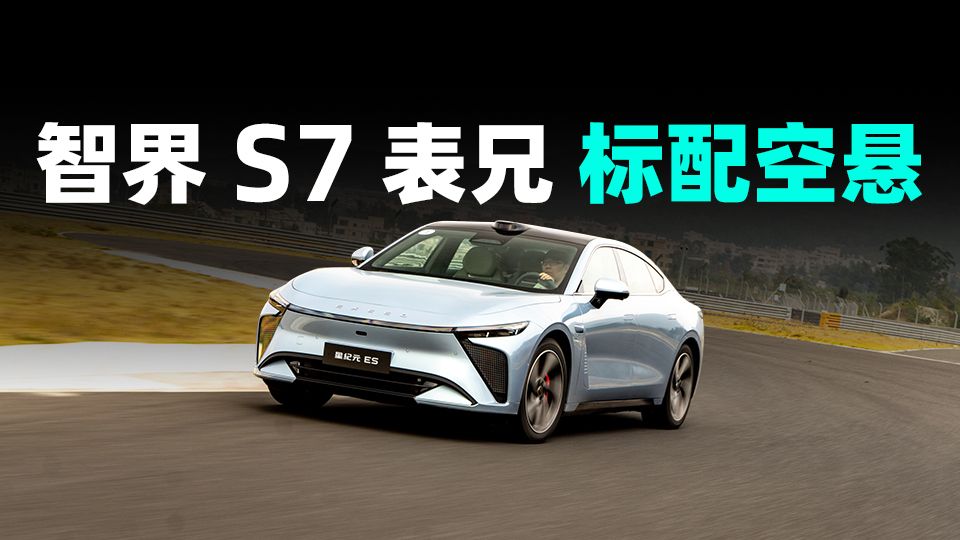Reflecting upon my initial test drive of Chery’s pure electric models, it was already 5 years ago. This car has long been discontinued. In 2018, when the domestic new energy market was still in its early stages, NIO ES8 had just been delivered, and Xpeng P7 was also in its infancy. However, as a veteran car company, Chery has made a long journey in new energy and had established Chery EV as early as 2010. However, it’s a shame that although Chery took an early lead, it did not have a strong presence during the most thriving period of the new energy market in China.
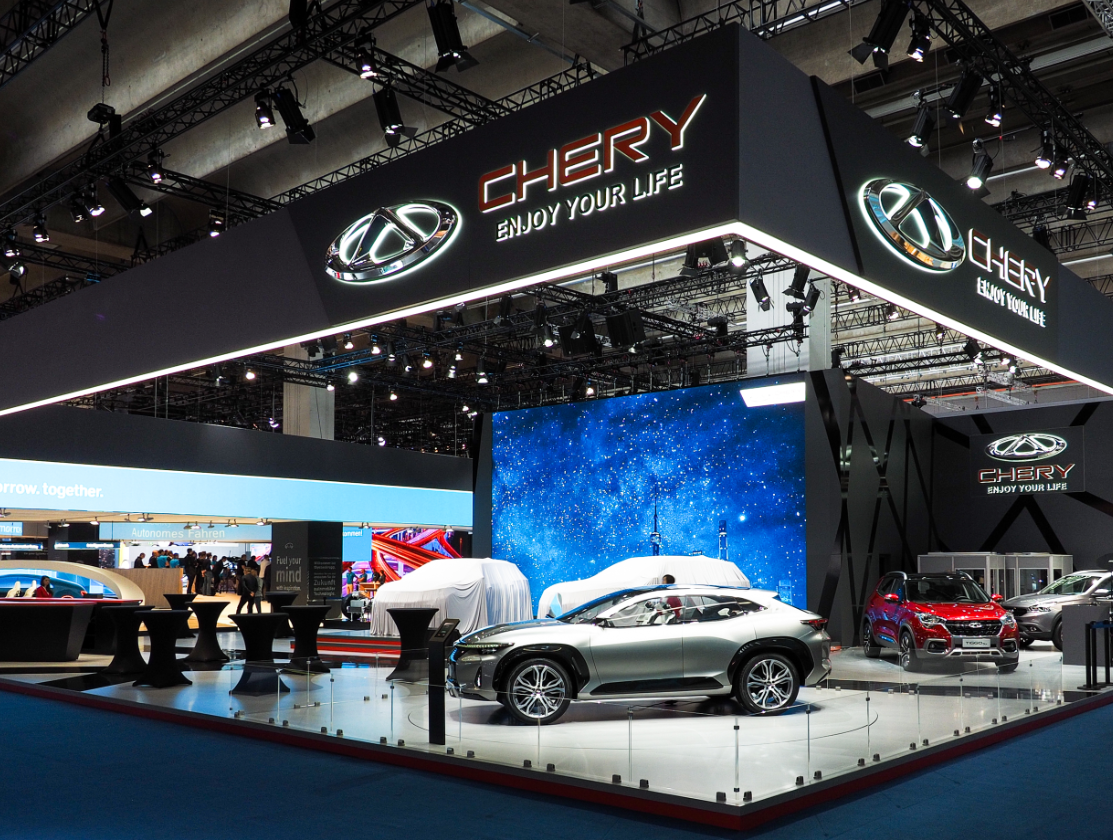
However, this situation changed this year, mainly thanks to the EOX pure electric platform exclusively built by Chery. This platform can build a wide range of models, including compact to medium and large sedans, SUVs, and MPVs, and can also accommodate pure electric and extended range. Chery has poured all its technology into this platform with 800V, laser radar, integrated die-casting body, double ball joint double fork arm, air spring, rear wheel steering, none of the mainstream hardware configurations for middle and high-end pure electric models are missing. Chery describes that within two years, 15 new models will be born on this platform. Chery has also partnered with Huawei on this platform to launch the very popular LUXEED S7.
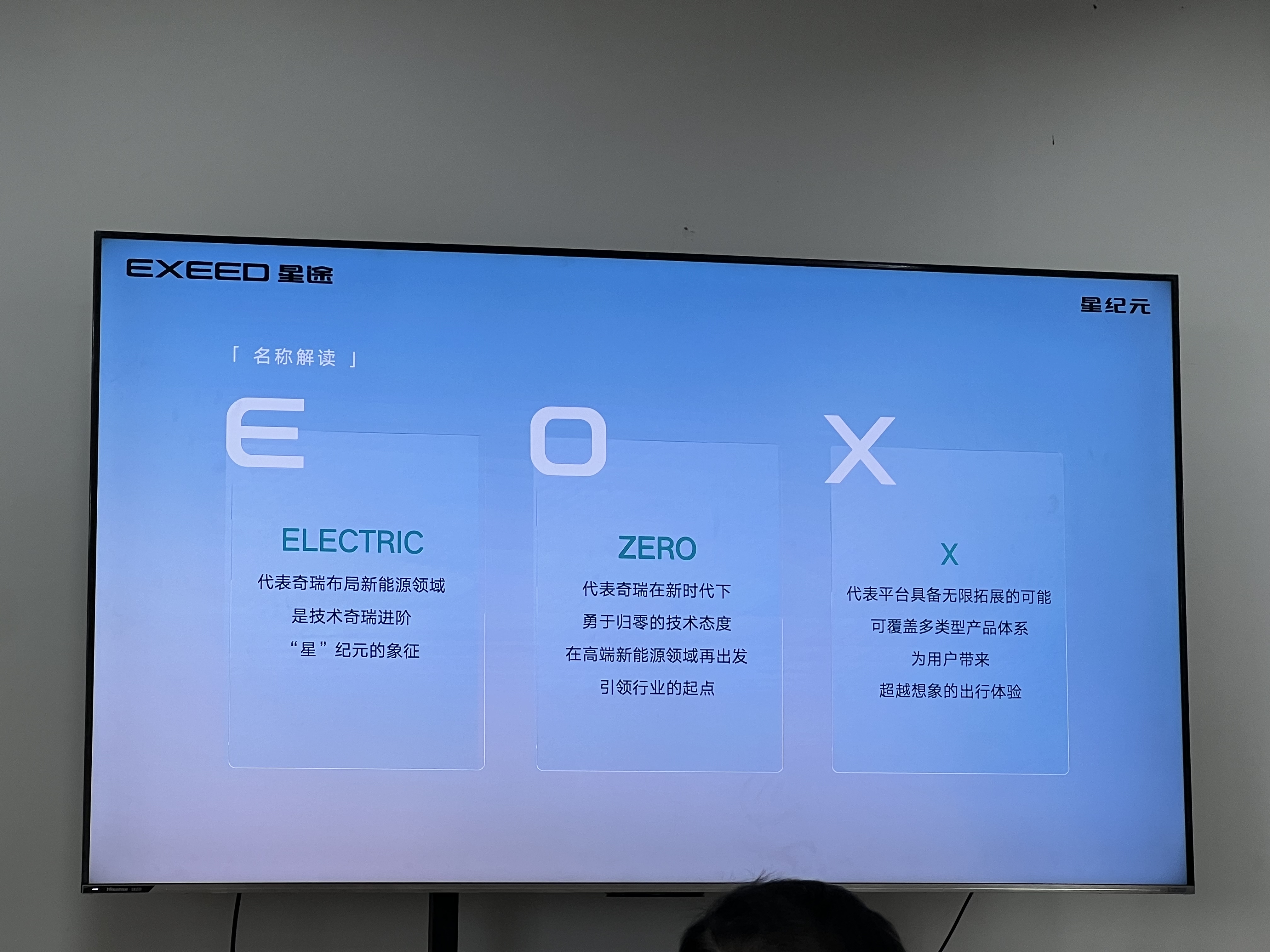
Chery’s model built on this platform – the EXEED Era ES, also began pre-sale at the recent Guangzhou Auto Show, with a pre-sale price of 248,000 – 358,000 yuan. It was also announced that the EXEED Era ES will come standard with CDC and air spring, which is very rare at this price. However, the EXEED Era ES also gave its reason, that it intends to become a “world-class super comfortable long-range sedan”, not my words, but the slogan at the test drive.
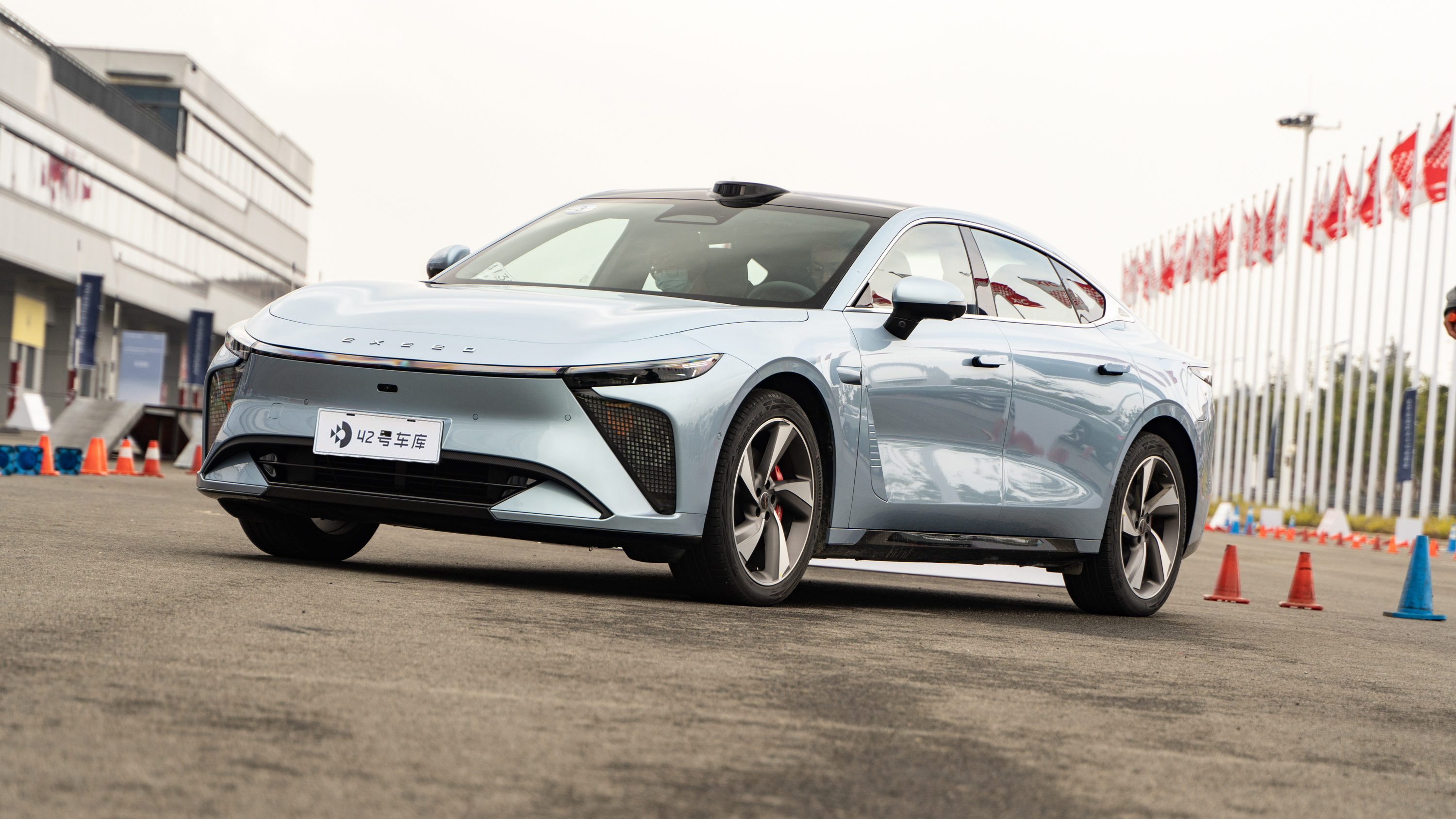
Now, Although Sharing the Same Platform with LUXEED, It Looks Completely Different
The EXEED Era ES has been unveiled for a while now. As the sibling of LUXEED S7, its position is also a mid-to-large pure electric sedan. Let’s first look at the specifications. The length, width, and height of EXEED Era ES are 4945 * 1978 * 1467 mm, with a very unique wheelbase of exactly 3000 mm. The EXEED Era ES is slightly shorter than LUXEED S7, but the wheelbase is 50 mm longer. However, the positioning of EXEED Era ES is to provide comfortable home situations, which is different from the sporty brand positioning of LUXEED S7. This should be a deliberate differentiation in product positioning by the two companies to target different consumer groups. Otherwise, there might be internal conflict between the two siblings after they come into the market.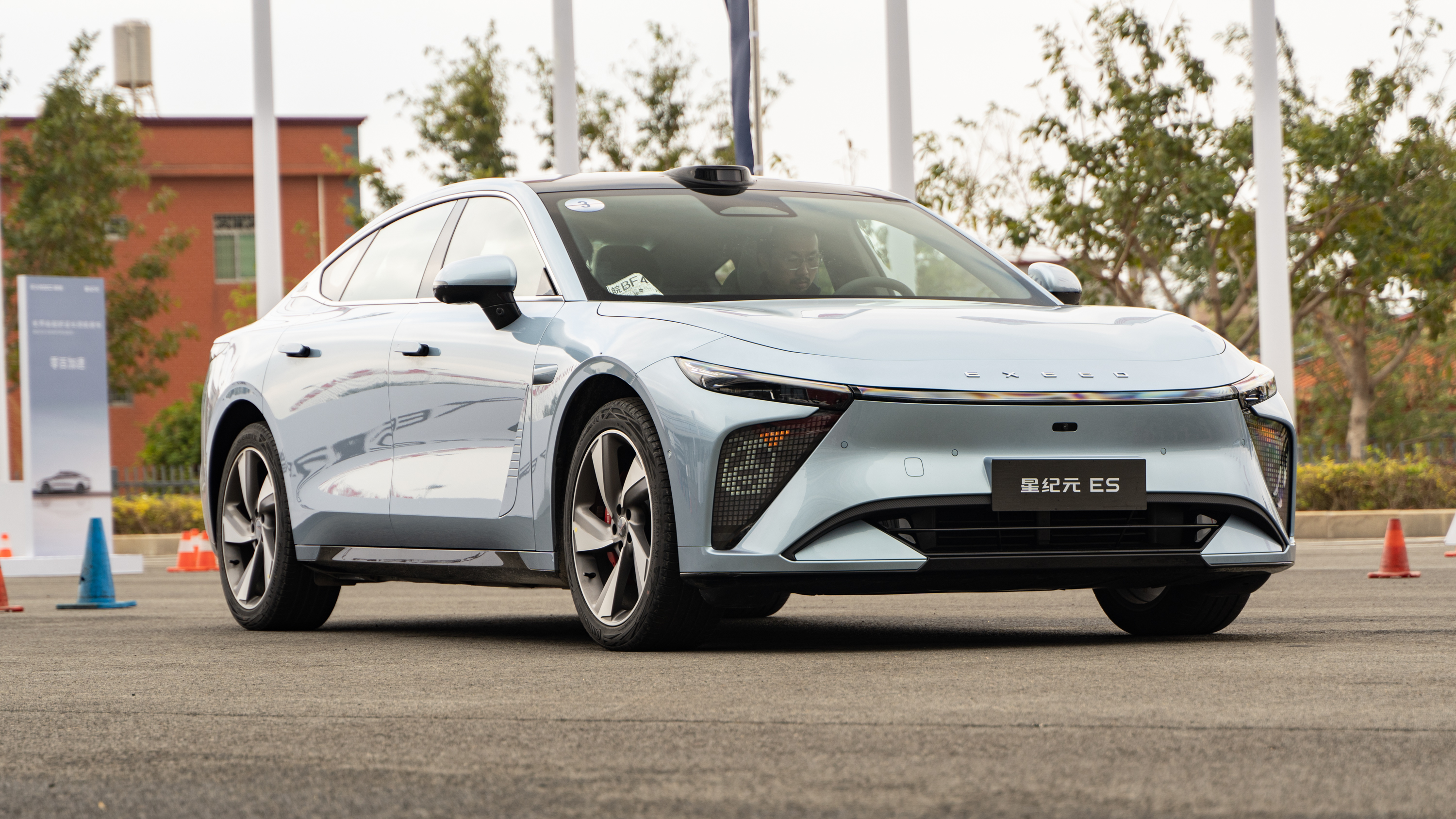
Exuding a simplistic and grandeur style, the EXEED Star Era ES, as the first new car of the new platform, naturally embraces the latest generation design language of EXEED. Tailing closely with its product positioning, it does not embody an overly sports element. Similar to many other electric sedans, the front of the Star Era ES sits quite low, carrying on with the light band tradition. Instead of adopting a fragmented headlight design, it opts for a narrowed down version to seamlessly merge the headlights and day running light band into a unified entity. If you decide to splash out on the top model, you’ll be greeted with a prominent digital headlight located in the fog light zone at the front, stocked with a variety of pattern options in the vehicle system, among which the panda one is indeed quite endearing. As of now, customisation is yet to be supported.

The EXEED Star Era ES features a common hatchback design seen in pure electric sedans. With nearly 5 meters in length and reasonable height, it exudes a slender profile from the side. Worth noting is its impressive aerodynamic performance, boasting an aerodynamic coefficient as low as 0.205 cd. In comparison, LUXEED S7 from the same platform clocks in at 0.203 cd, which is a remarkable standard. Additionally, the Star Era ES sports a BMW i5-like design on the side, which is the emblem on the C-pillar that glows.
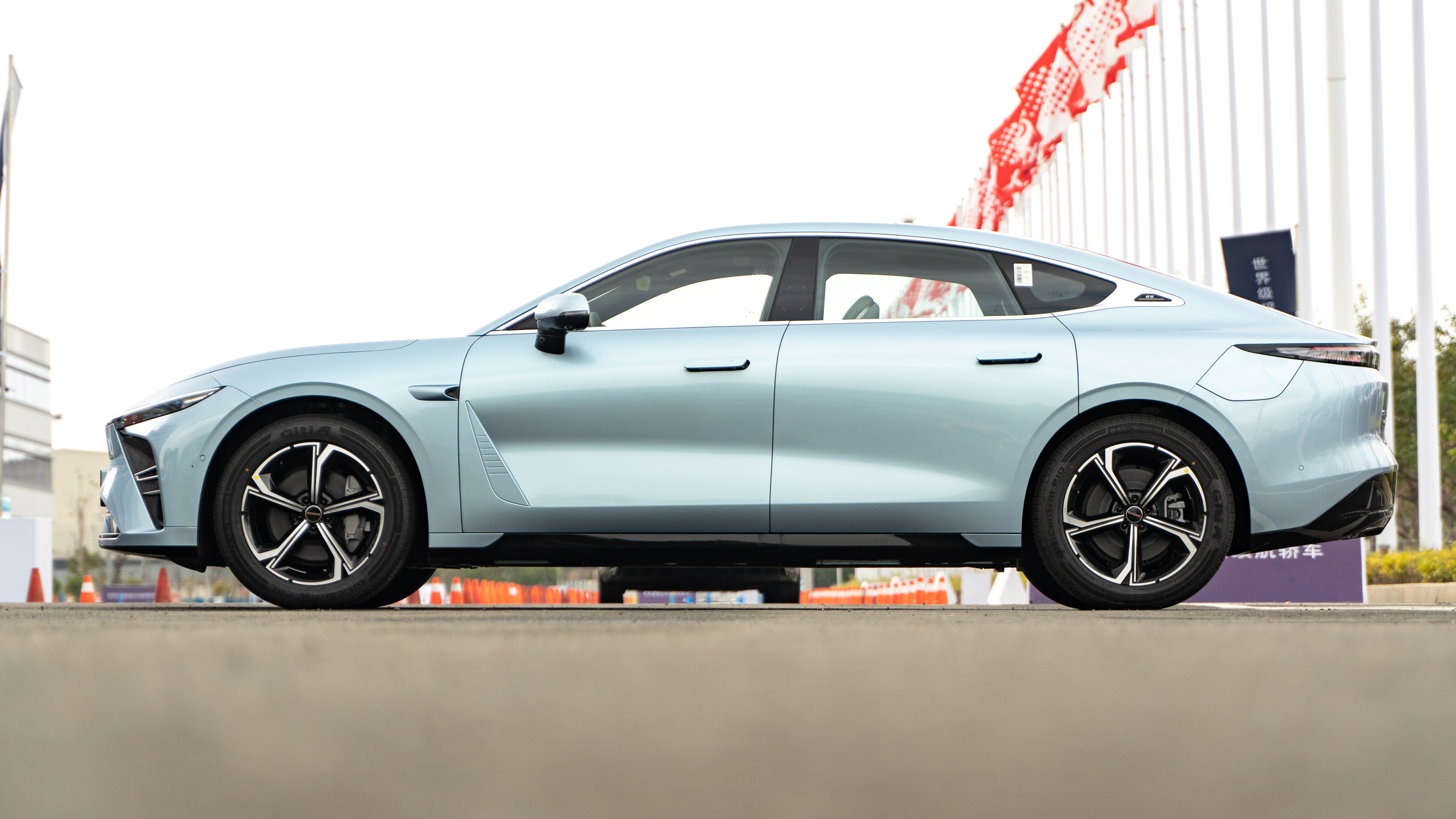
Reserved for the top model is the automatic spoiler at the rear, boasting two positions and capable of delivering a downward force of up to 370N. While it can be deployed automatically, manual opening is also supported. It’s astonishing to note that automatic spoilers, which used to grace supercars costing hundreds of thousands or millions, have now become a commonplace feature.
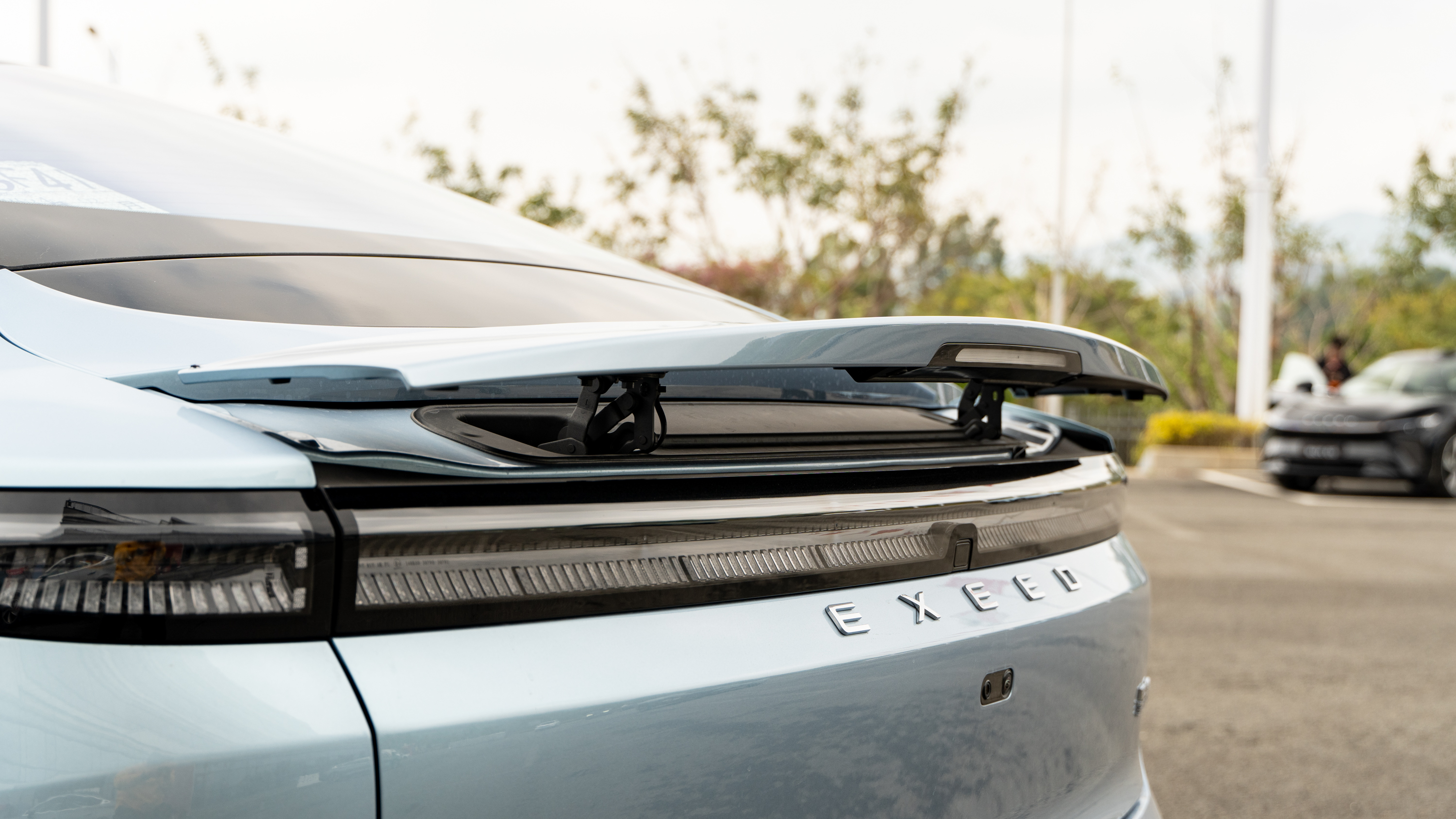
Despite the hatchback design, the EXEED Star Era ES doesn’t compromise on the rear boot opening. It’s rather spacious and suitable for storing larger items such as folding bicycles and supports an electric opening. However, there’s room for improvement in terms of versatility, such as additional hooks. Considering this model is aimed at families prioritizing comfort, having such features is essential.
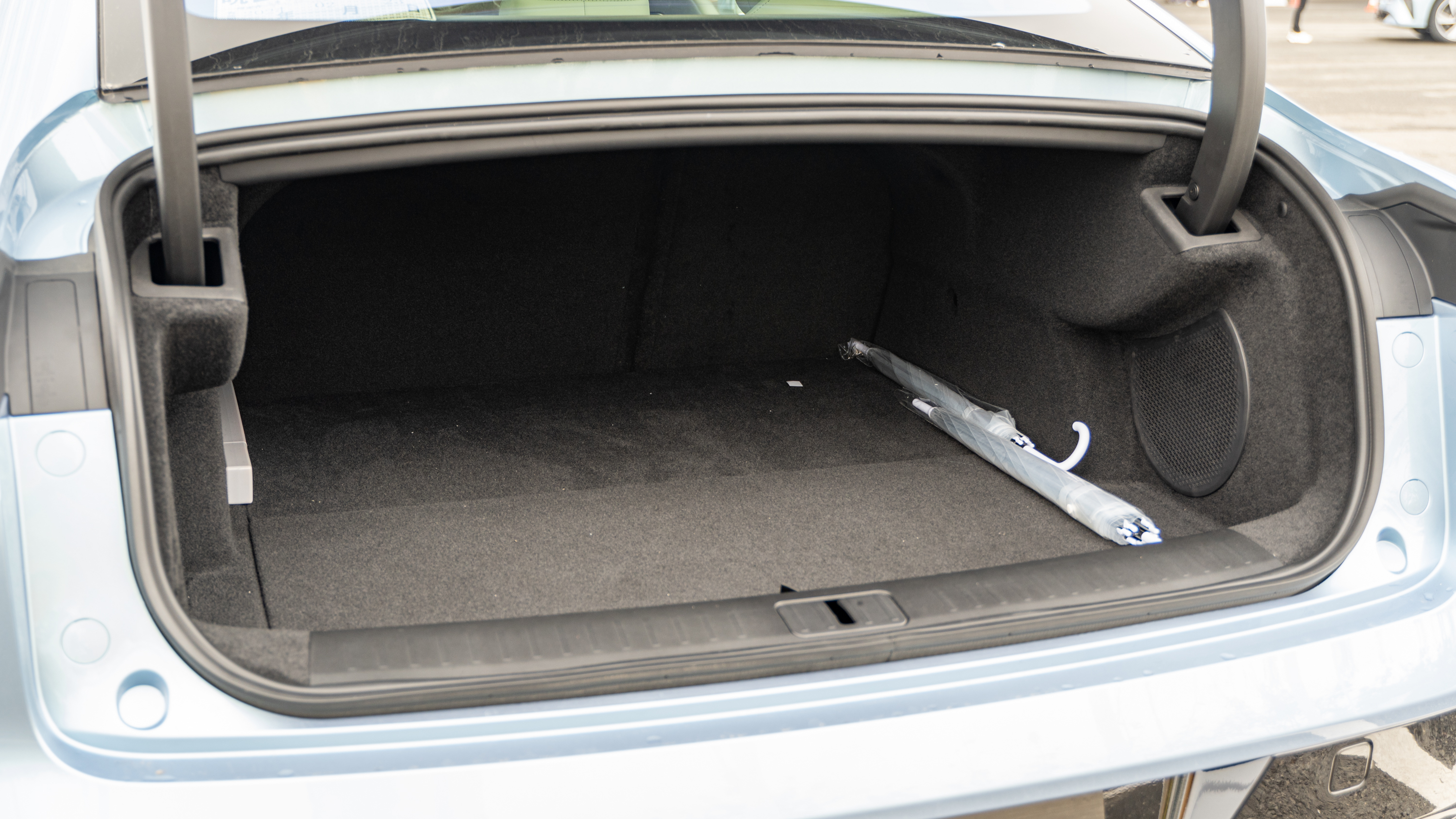
Cabin sans Huawei, Satisfactory Experience Still Ensured
Simplicity resonates in the interior of the EXEED Star Era ES, maintaining an elegant and welcoming vibe, notably with the dual-tone light-coloured interior that exudes warmth. The visual appeal is further enhanced with expansive leather upholstery. The central region is adorned with a crystal decorative light strip, akin to the new BMW 7 series, radiating a sense of finesse. A brighter daylight setting would be an improvement, bar which, it risks appearing plasticky.The cockpit layout contains a considerable display area, boasting a head-up display and a petite LCD dashboard seamlessly integrated into the design. The head-up display’s content can be customized in the central control’s menu, a commendable feature. Nevertheless, its operation logic can be a tad peculiar, turning off automatically in Park and only reactivating in Drive (D).
The central part is equipped with a 15.6-inch central control screen identical in size to that of the LUXEED S7, reaching a 2K resolution. Instead of using Hongmeng cockpit software, the EXEED Star Era ES uses a car-machine system independently developed by Chery. The system is powered by a Qualcomm 8155 chipset, ensuring smooth operation with its mainstream hardware configuration.
Upon usage, you may notice that the UI design of the EXEED Star Era ES’s central screen remarkably resembles that of Hongmeng, maintaining a dual-layer DOCK bar format. The lower layer includes HOME, AC settings, seat adjustment, and menu buttons, while the upper layer features customizable ability cards, ideal for hosting frequently used features. While it does borrow traits from more mature car-machine systems, it offers low learning costs, ensuring all the main screen functions are readily accessible.
The secondary menus can be slightly convoluted, particularly in the vehicle settings interface. Frequently-used functions such as settings for the exterior rearview mirror and steering wheel are not as prominent as they could be. Furthermore, these features are separated, easily overlooked during searches and are not available on the pull-down negative display. Nonetheless, users have the option to customize the left steering wheel keys as shortcuts. Other issues include the low placement of some drive functions, making it challenging to spot the slip-through mode under the driving mode interface. Chery’s staff has assured us that these issues are currently being addressed, and the optimized version will be available upon the official rollout.
On a functionality level, this system has limited support for third-party applications, including popular entertainment apps like iQiyi and Bilibili. However, in comparison to its counterparts, there is room for improvement in terms of providing more diverse applications. The EXEED Star Era ES does offer one exceptional feature uncommon among other self-brands: wireless CarPlay compatibility. Plus, it displays full-screen adaptation, making it incredibly user-friendly, especially for regular CarPlay users.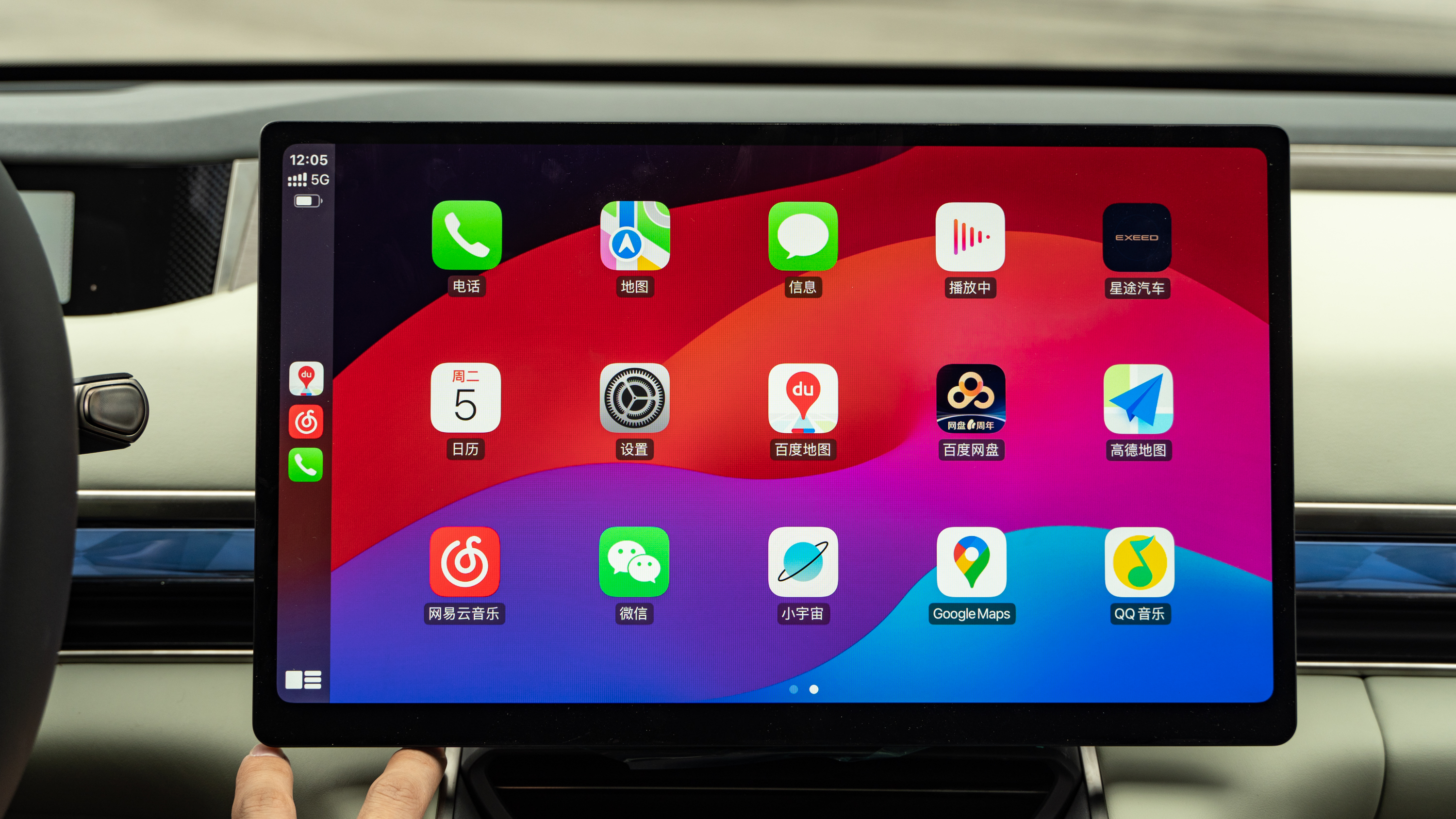
The intelligent voice system of the EXEED ES is developed by industry giant iFlytek, providing an enjoyable experience with its ability to process successive commands. We tested it on-site, and it was able to recognize 5-6 commands at a time, executing them rather quickly. As for the ‘big model,’ we didn’t have a chance to experience it. Perhaps it wasn’t available on the trial car.
As a luxury, comfort-based, all-electric sedan, the ride experience, and inner space of the EXEED ES are crucial. The front seats offer sound comfort, being soft yet supportive. Unlike many electric sedans, the car seats aren’t elevated due to the battery’s location, and there’s enough headspace for a 177 cm tall person. The seat configuration offers ample features, including heating, ventilation, massage, with eight massage modes catering to different needs.
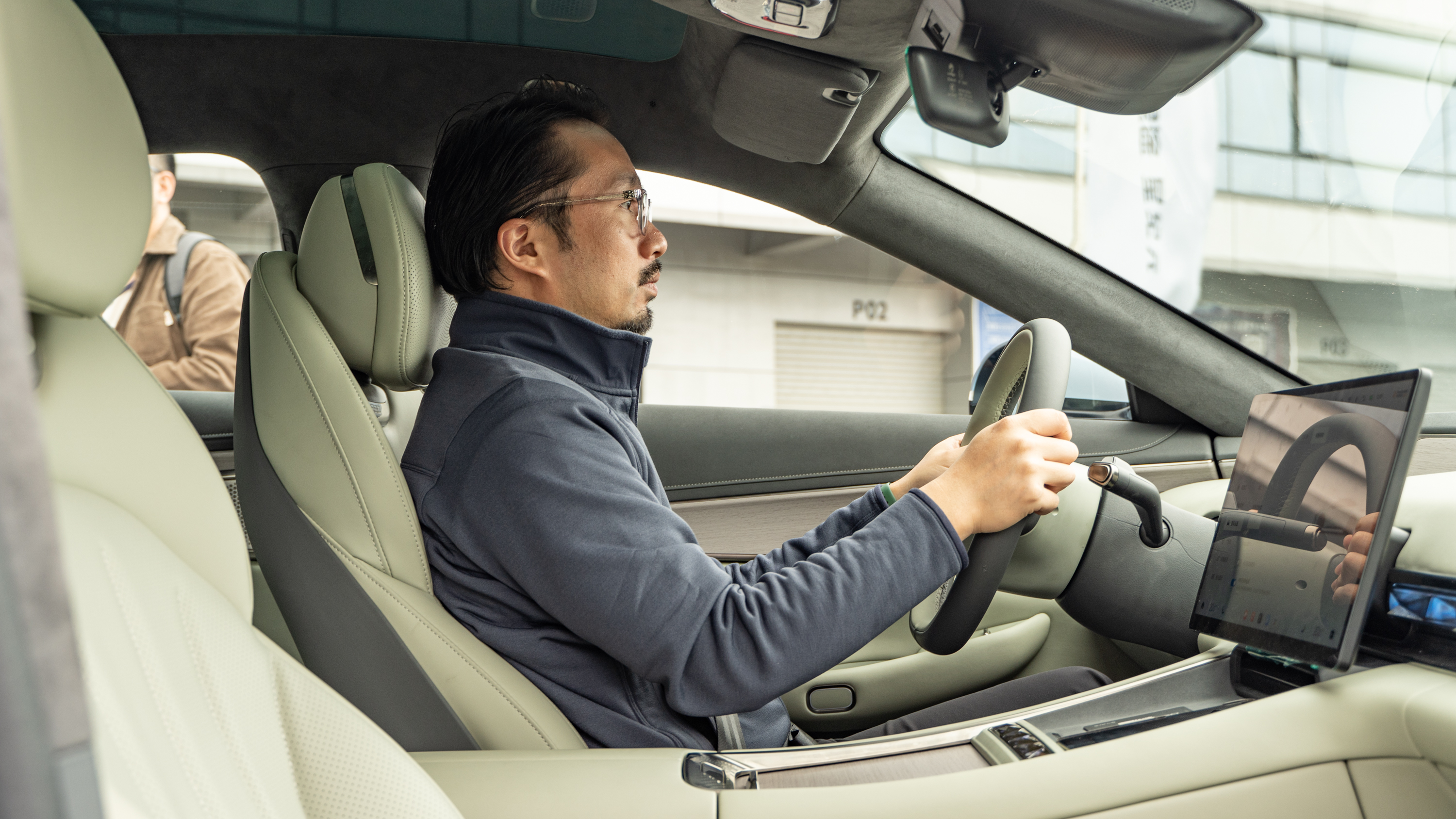
The back seats manage to maintain the same level of softness as the front seats, but to ensure considerable head room, the bottom part is designed lower, which might give a nestled feeling while seated. Despite the cushion being sufficiently long, there’s some lack of support for the upper thighs. Yet, the amenable spacing allows for different seating positions. Additionally, the back also features a compact control screen for managing air conditioning and music, among other functions.
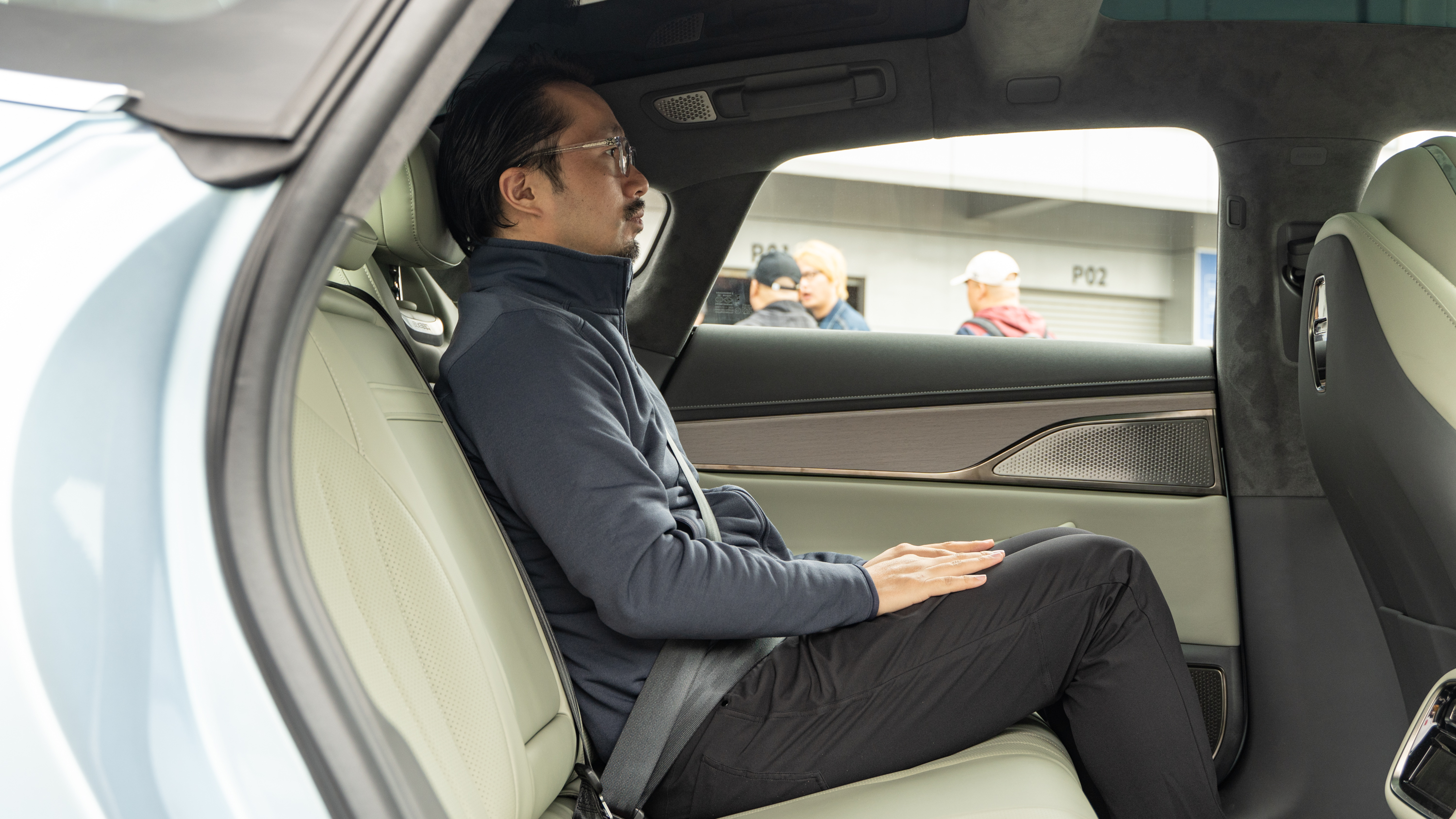
Standard CDC + Air Suspension for Ultimate Comfort
The key to EXEED ES’s claim of being a ‘world-class, ultra-comfortable, long-range sedan’ might be their standard CDC and air suspension chassis. Given its pre-sale price ranging from 248,000 to 358,000 yuan, it’s likely the cheapest mid-to-large-sized sedan on the market having standard air suspension, though the official listing price may be even lower.
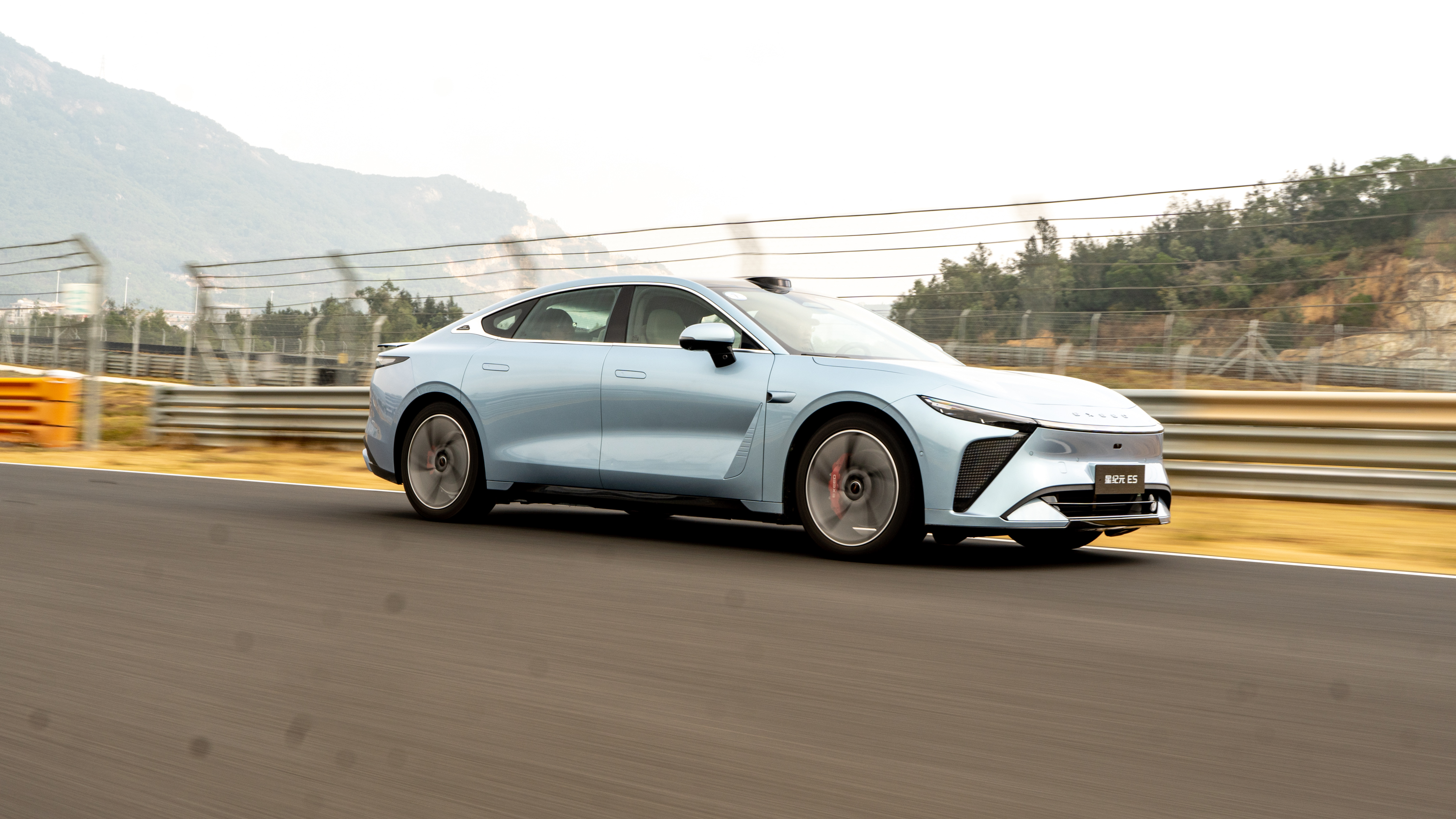
What’s surprising is that the comfort-focused EXEED ES also provides a race track experience. While its straight line acceleration is impressive, thanks to its dual motor version offering an overall power of 353 kW and an official 0-100 km/h time of 3.7 seconds, the pairing of a double ball joint double wishbone suspension at the front, a multi-link suspension at the back, air suspension, and CDC, still make it far from ideal for racing, even in the sportiest mode. The suspension tends to be on the softer side on the track, unable to provide sufficient support and prone to significant lateral tilt. Hence, the EXEED ES’s main battlefield remains the daily roads.This time, we intentionally selected a route with less than ideal conditions to test the vehicle’s chassis. In comfort mode, the performance was overall satisfactory. Bumps and jolts were smoothly handled, regardless of their size. Even when quickly passing over speed bumps, the impact inside the vehicle remained minimal, showcasing the floating sensation unique to air suspension. However, the suspension was slightly sensitive to continuous, minor road bumps, resulting in somewhat excessive vibration. If this could be better isolated, it would align better with its definition of “comfort.”
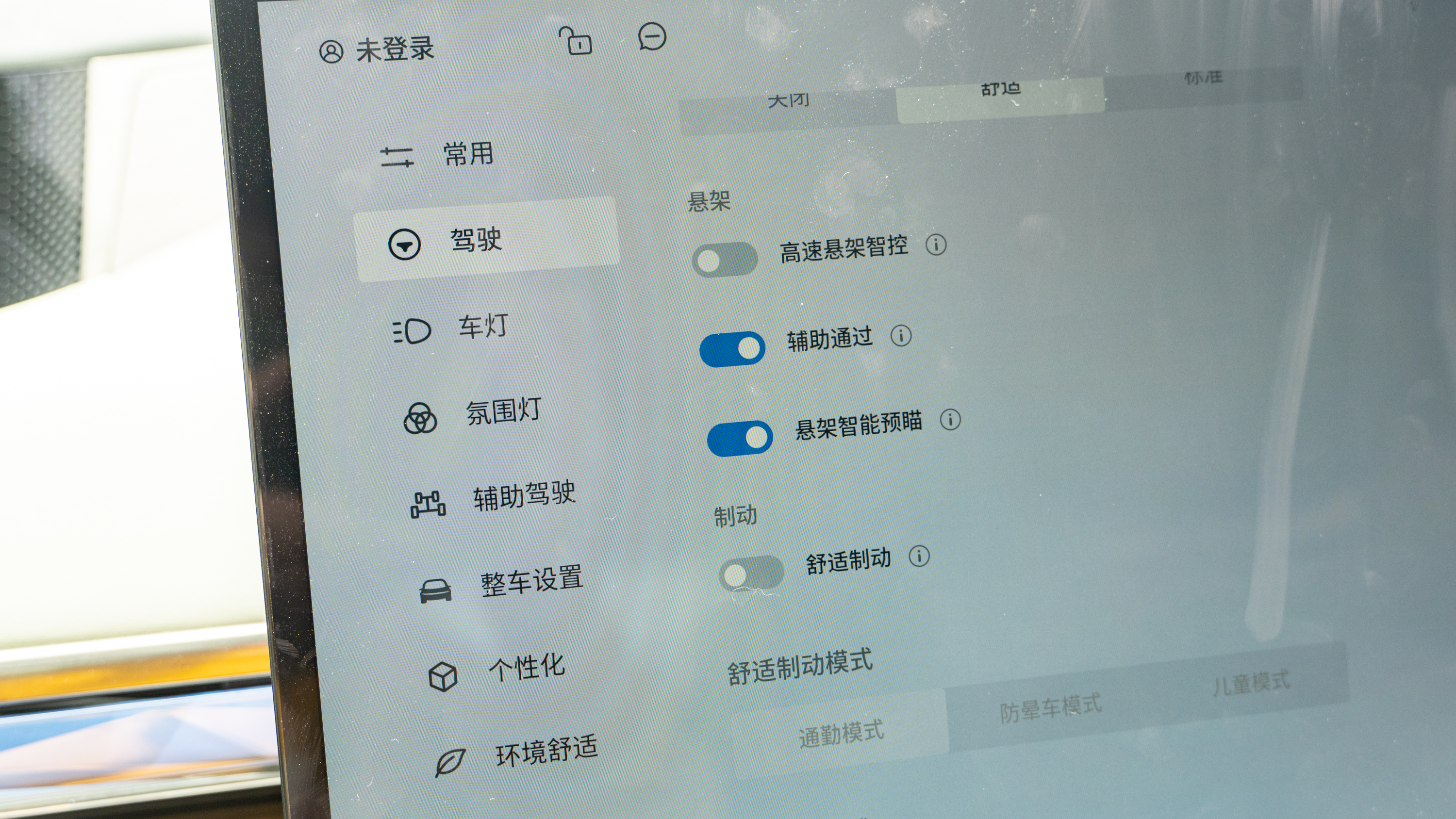
Besides providing enhanced comfort, the air suspension system can also be adjusted according to different vehicle postures and passes. For instance, the EXEED ES has a ‘Pass-Assist’ mode that raises the suspension to its highest state, an additional height of 30 mm. The maximum clearance can reach an astonishing 180 mm, offering the passability equivalent to a city SUV. To that end, it’s fully capable of traversing curbs or bumpy roads with the EXEED ES.
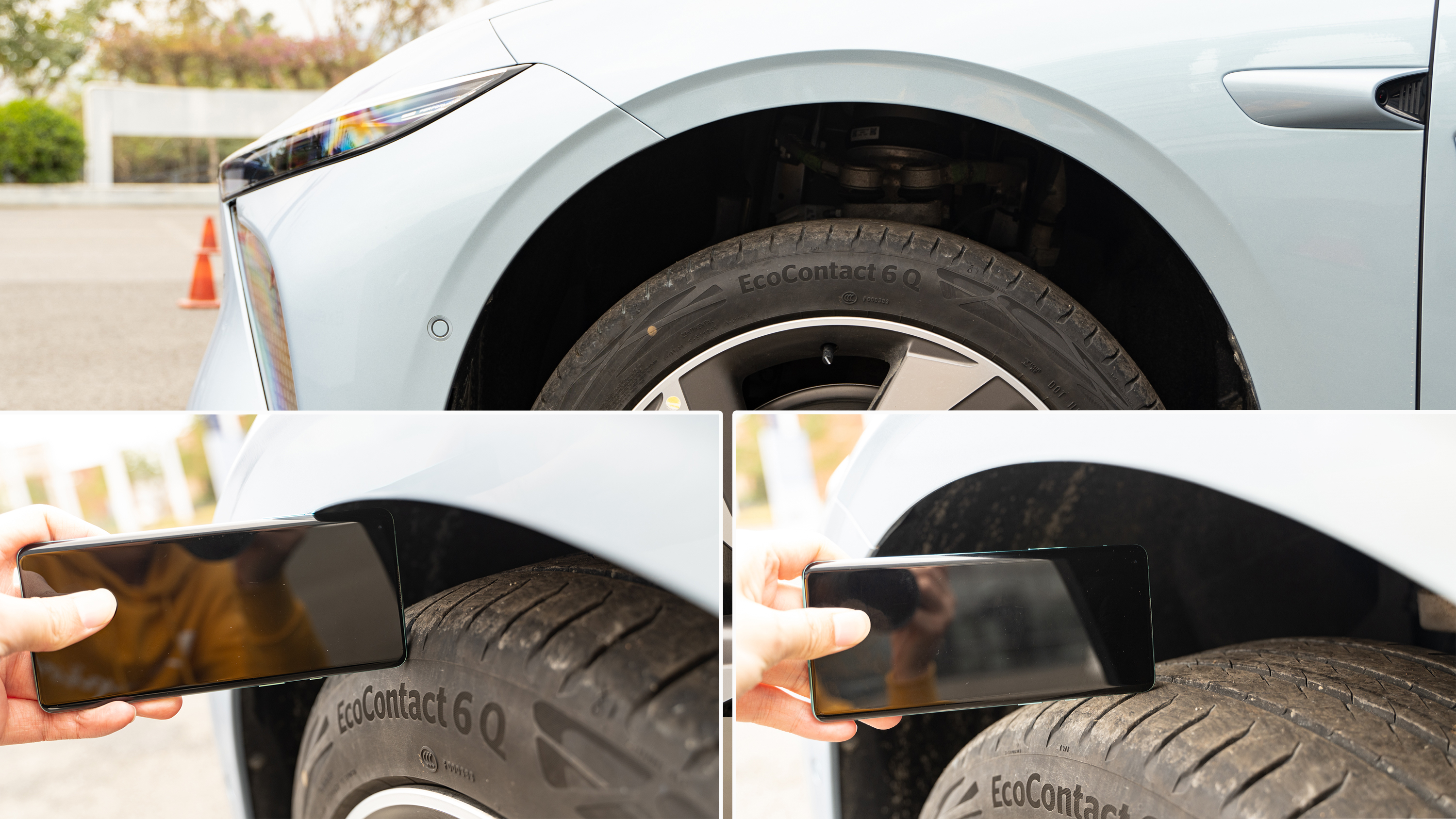
As we previously mentioned, the dual-motor version of the EXEED ES has robust power. We experienced its zero to hundred km acceleration and observed the car’s noticeable upward lift when the pedal was floored. In comparison to its performance, the refinement of the ES’s throttle pedal calibration is more impressive. Regardless of whether it’s set to Comfort or Sport mode, the power output is linear and can be managed with ease through delicate pedal input.
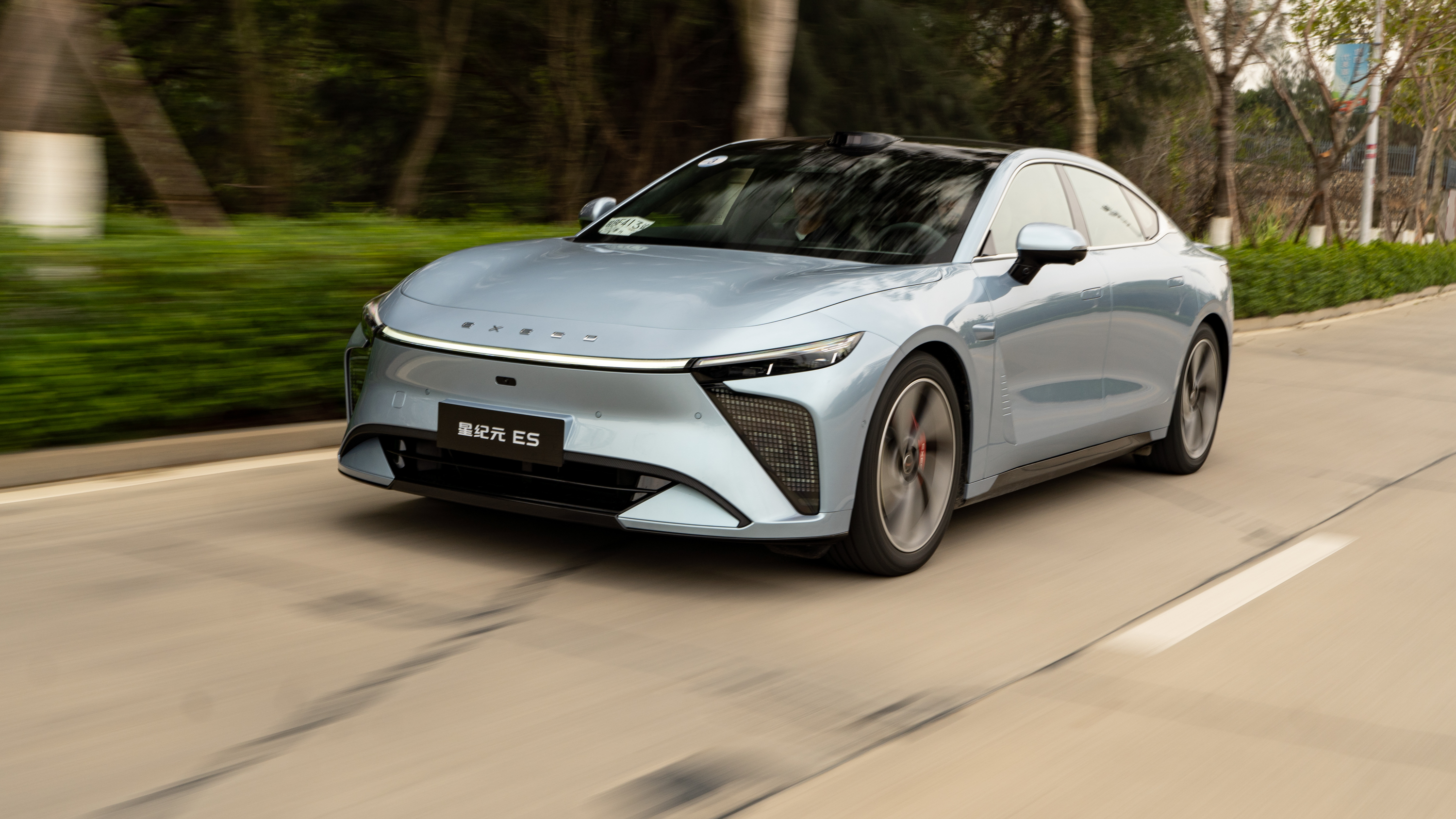
Both the steering and braking provide two modes: Comfort and Sport. However, even in Sport mode, the steering is relatively light and exhibits a distinct dead spot in the central area. The subsequent directionality is good, but the vehicle’s response can’t be classed as swift. One advantage of this is that the vehicle doesn’t react too sensitively during minor steering corrections in daily driving conditions, offering a more comfortable experience for the occupants. Additionally, the turning radius of the EXEED ES is 5.7m, which is quite agile for a car nearly 5m in length.
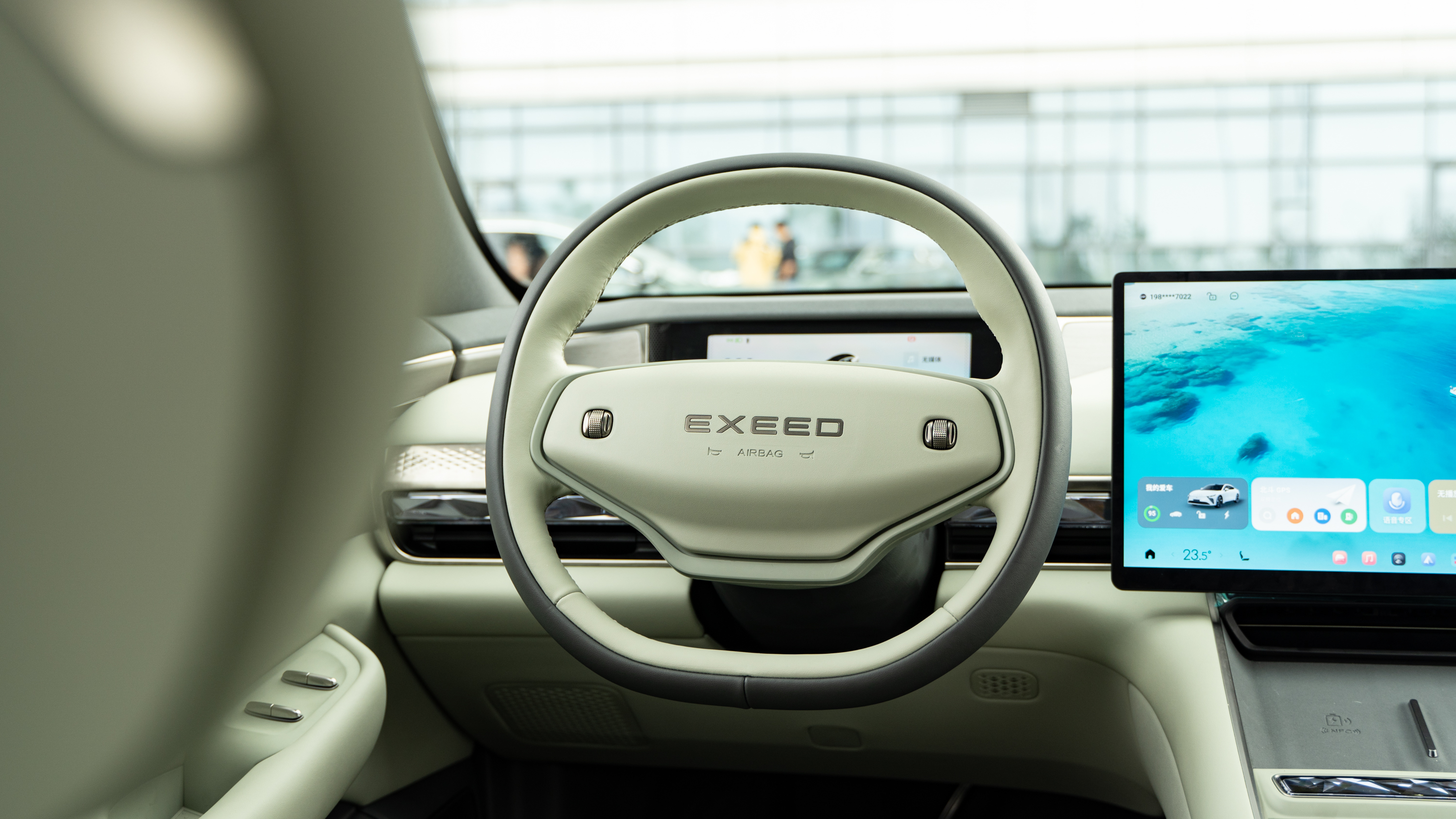
Since we had a limited time to test drive the EXEED ES, we couldn’t fully assess its energy consumption and battery lifetime. After borrowing the vehicle again, we’ll run more tests. The EXEED ES is available with four different types of batteries, with capacities of 60 kWh, 66 kWh, 82 kWh, and 100 kWh, respectively corresponding to ranges of 550 km, 605 km, 720 km and 905 km. Aside from the base PLUS model, all other models support 800V high-voltage rapid charging, boasting a five-minute charge providing a range of 150 km and a charging time of merely 15 minutes to increase the battery from 30% to 80%.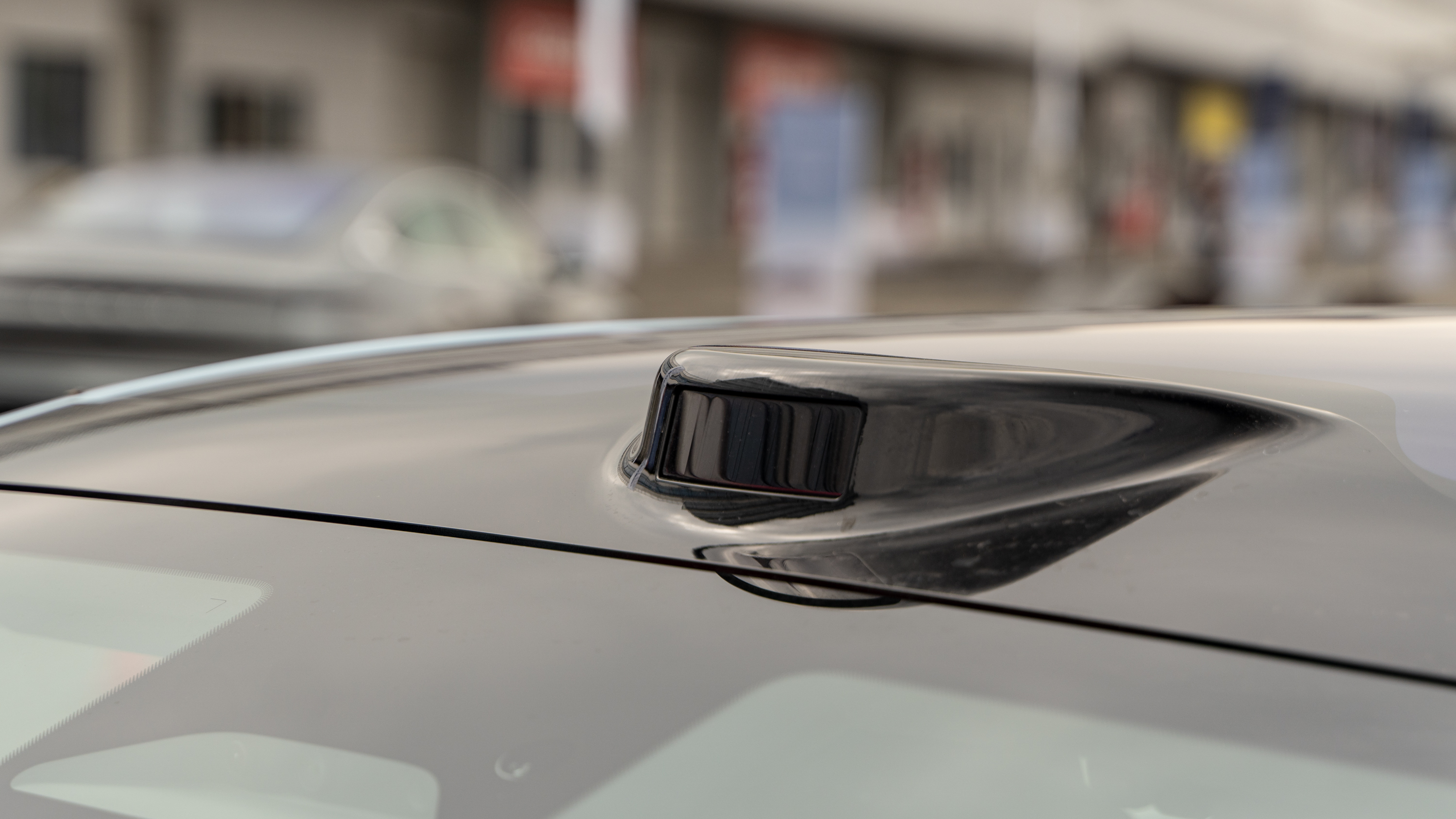
Finally, let’s talk about the smart driving information for the EXEED ES top model. It comes standard with a single lidar, but it can be optional for other models. Whether the advanced smart driving feature requires a one-time purchase or is available as a subscription will be revealed once the car goes on sale. The smart driving of EXEED ES, developed by Dazu Intelligent which is invested by Chery, is expected to gradually open highway and city navigation-assisted driving functions in January next year. Moreover, opting for lidar will not only enhance the smart driving capability but also add a road scanning function that will provide information for the suspension to adjust in advance, improving comfort during bumps.
Conclusion
As mentioned earlier, my first test drive of Chery’s electric model was in 2018. In the same year, Chery launched its brand new premium brand — EXEED, marking another step up for Chery. Although expectations were high, EXEED did not develop as smoothly as expected. So Chery’s decision to transition EXEED to a premium new energy brand might be a wise move. The EXEED ES is the first card to be played following the transformation of the brand.
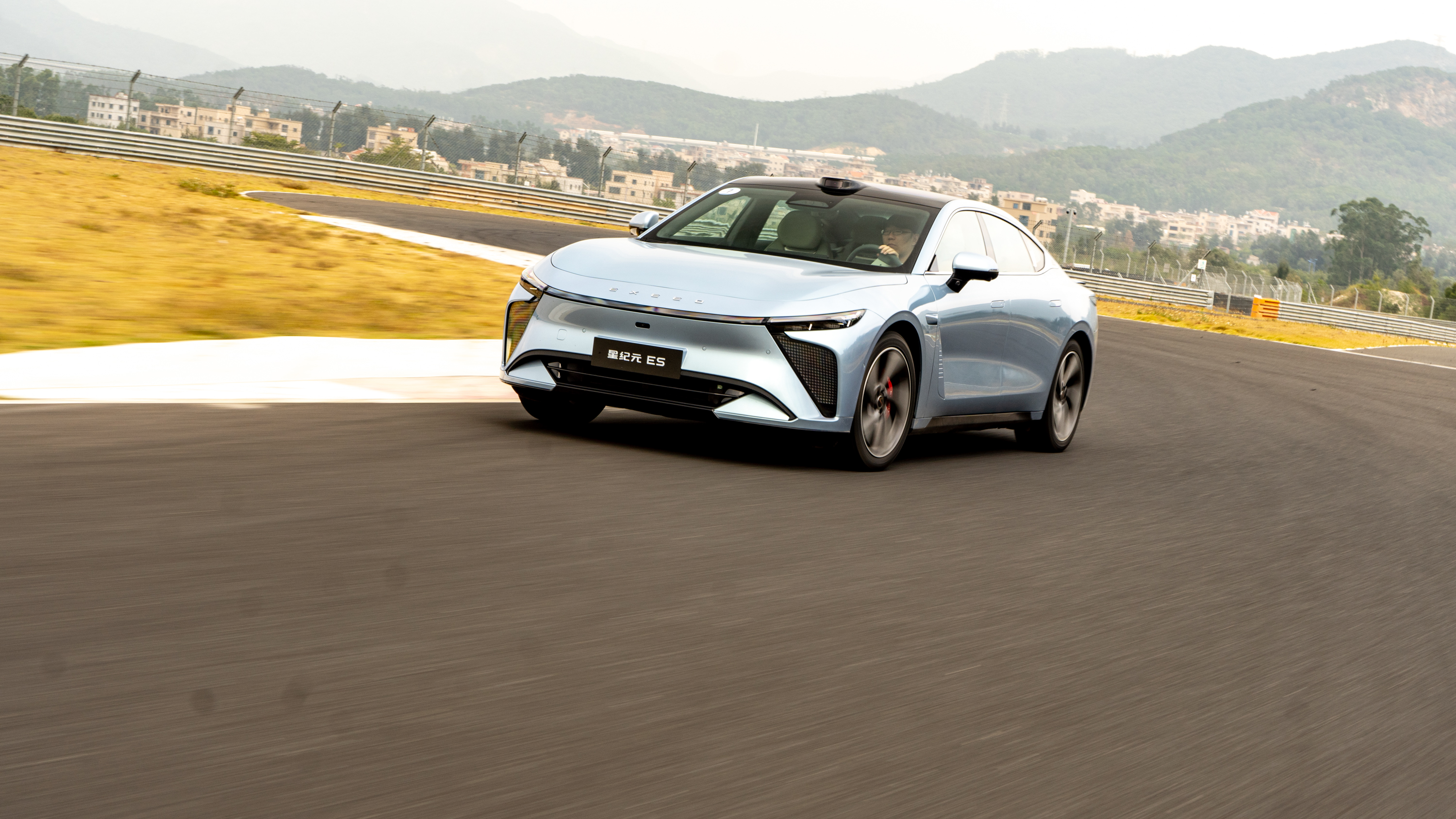
So, how powerful is this card? From a hardware perspective, the EXEED ES has plenty to boast, including its 800V high-voltage platform, dual SiC motors, lidar, dual Orin X, and so on. The biggest highlight though is that all models come standard with CDC and air springs. It’s the first time air springs have been made available at this price, and the “ultimate comfort” positioning is pretty unique at this level as most brands focus only on control and performance.
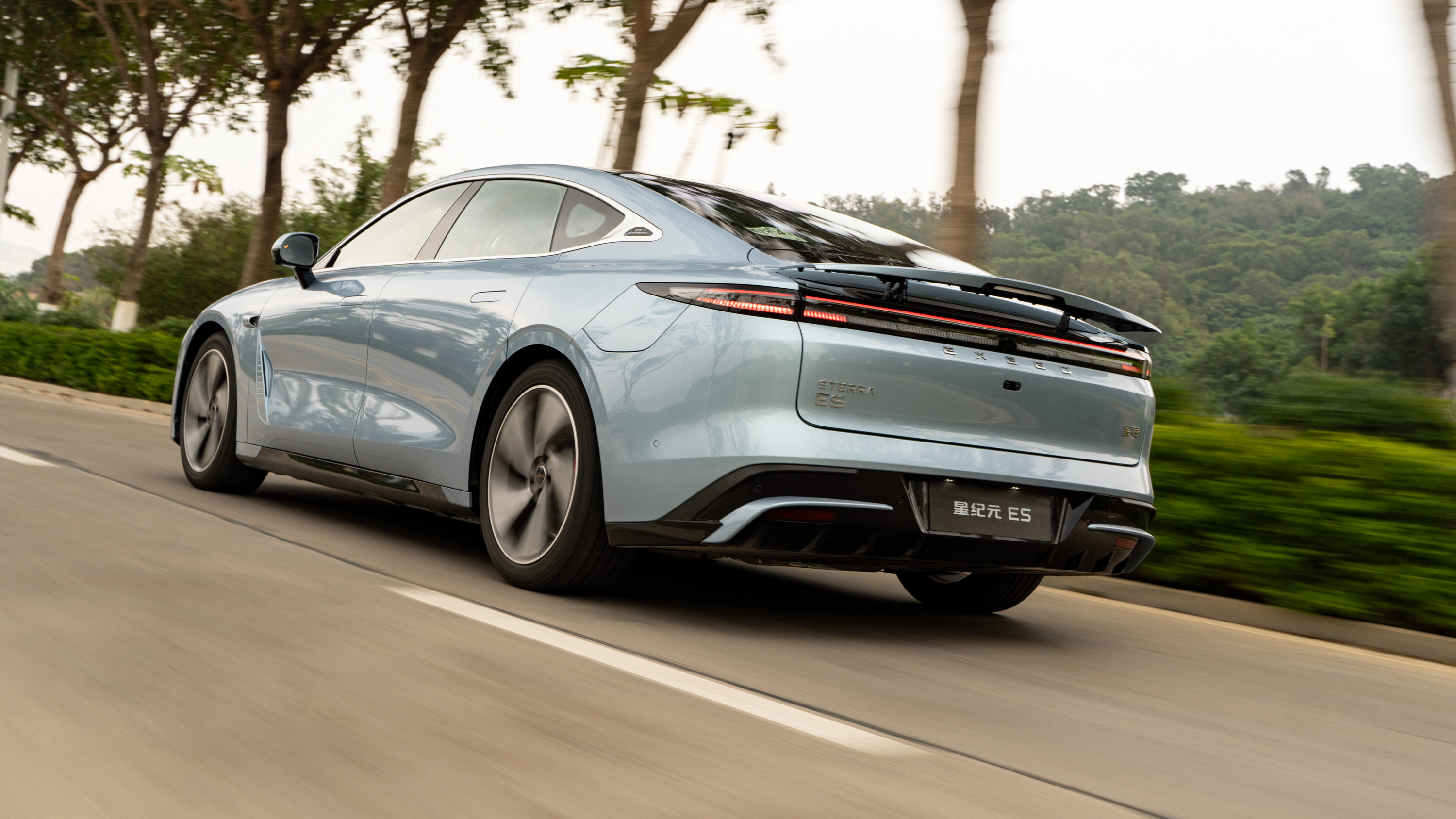
In 2024, the most competitive market should be the 200k-300k pure electric car market. Just in the Geely line, there are already two new models. The ZEEKR 007 starts at 220k, and the Galaxy E8 even below 200k. Not to mention LUXEED S7, which may be unique due to being powered by Huawei. So, all loads are on EXEED ES. However, the technically strong Chery equipped EXEED ES with comprehensive product capabilities. It has already received 20k orders after the presale at the Guangzhou Auto Show. The key is whether the official sale price will be a pleasant surprise. After all, two.In the year 2024, the era of price wars continues!
This article is a translation by AI of a Chinese report from 42HOW. If you have any questions about it, please email bd@42how.com.
